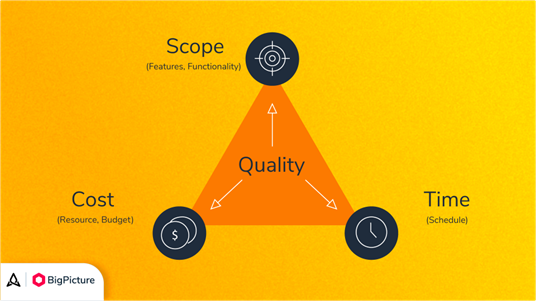Introduction
The history of project management dates back to ancient civilizations, where large-scale projects, such as the construction of the pyramids of Egypt, the Great Wall of China, and Roman aqueducts, demonstrated the need for organized planning, resource management, and coordination of labor. Although these early projects lacked formalized methodologies, they represent early examples of project management principles in action.
The modern concept of project management as a distinct discipline began to emerge in the 20th century. The industrial revolution brought about an increased need for managing complex projects efficiently, particularly in industries such as manufacturing, construction, and engineering. In the early 1900s, Henry Gantt, a pioneer in management theory, introduced the Gantt chart, which became a widely used tool for planning and scheduling tasks. Gantt’s work, along with the contributions of Frederick Taylor, who developed scientific management principles, laid the foundation for modern project management.
Project management gained further prominence during World War II, when governments needed to manage massive military projects. The Manhattan Project, which led to the development of the atomic bomb, is often cited as one of the first projects to apply formal project management techniques. The complexity and scale of this project required extensive planning, coordination, and the integration of multiple disciplines, which helped solidify the importance of structured project management.
In the 1950s, two formal project management methodologies emerged: the Critical Path Method (CPM) and the Program Evaluation and Review Technique (PERT). Both were developed to manage large defense and industrial projects and became standard practices in managing complex tasks. CPM focuses on determining the longest sequence of dependent tasks that must be completed on time for the project to meet its deadline, while PERT introduced probabilistic time estimates to account for uncertainties.
By the 1960s and 1970s, project management methodologies became formalized across industries, with professional organizations such as the Project Management Institute (PMI) being established to standardize practices and offer certifications. The PMI’s Project Management Body of Knowledge (PMBOK) became a widely adopted framework, providing guidelines and best practices for project management.
Today, project management is recognized as a critical discipline across industries, evolving further with the advent of agile methodologies, which focus on flexibility and rapid iterations, particularly in the software and IT sectors. As businesses continue to innovate, project management remains a core function for achieving strategic goals and managing the increasing complexity of global projects.
Project management is an essential discipline in today’s complex business environment. It involves the application of knowledge, skills, tools, and techniques to project activities to meet the project requirements. The discipline focuses on achieving specific goals within given constraints, which typically include scope, time, and cost, often referred to as the “triple constraint” or the project management triangle. A project is a temporary endeavor designed to produce a unique product, service, or result, with a clear beginning and end. Unlike ongoing operations, a project is unique and not repetitive, which necessitates a tailored approach in its management.
Projects exist in every industry, from construction and engineering to IT and healthcare, and their successful execution has a significant impact on the organization’s strategic objectives. The process of managing a project from initiation to closure is highly structured, involving stages such as initiation, planning, execution, monitoring and controlling, and closure. In this introduction, we will explore the core principles of project management, highlight its significance in modern businesses, and demonstrate its role in driving efficiency and achieving success.
The Triple Constraint: Balancing Scope, Time, and Cost
At the heart of project management lies the challenge of balancing the triple constraint: scope, time, and cost. These three elements are interdependent; a change in one often impacts the others. For example, if a project’s scope expands (often referred to as “scope creep”), it is likely that additional time and financial resources will be needed to accommodate the increased work. Conversely, reducing the time allocated for project completion might lead to increased costs due to overtime or the need to bring in additional resources to meet the deadlines.
Scope refers to the project’s goals and deliverables — what the project is expected to achieve. A well-defined scope is crucial as it sets the boundaries for what is included and what is not. Time, or the project schedule, determines the timeline within which tasks must be completed. Effective time management ensures that the project stays on track, avoiding delays that can have cascading effects on the project’s success. Cost, on the other hand, pertains to the financial resources allocated to the project. Managing project costs requires careful budgeting, resource allocation, and monitoring to avoid overruns that could jeopardize the project’s feasibility.

A successful project manager is adept at balancing these constraints, making decisions that prioritize the most critical aspects while negotiating compromises when necessary. The trade-offs between scope, time, and cost must always be weighed in the context of the project’s overall objectives.
Project Life Cycle: From Initiation to Closure
Every project follows a life cycle consisting of five distinct stages: initiation, planning, execution, monitoring and controlling, and closure. Each stage is crucial in ensuring that the project progresses in an organized and efficient manner.
1. Initiation: The initiation phase marks the beginning of the project. During this stage, the project’s objectives, feasibility, and key stakeholders are identified. A project charter is typically created, providing an overview of the project, its purpose, scope, and key milestones. This phase is vital for gaining buy-in from stakeholders and ensuring that the project has a clear direction from the outset.
2. Planning: Once the project has been initiated, the planning phase begins. This is where the roadmap for the project is developed. The project manager, along with their team, defines the scope in detail, sets a timeline, allocates resources, and develops a budget. Risk management planning also takes place during this phase, identifying potential risks that could impact the project and creating strategies to mitigate them. The output of this phase is a comprehensive project management plan, which serves as a guide throughout the rest of the project.
Planning is often considered the most critical phase of the project life cycle, as a well-thought-out plan can prevent many issues later on. As the saying goes, “failing to plan is planning to fail.” Without a clear plan, projects are likely to experience delays, cost overruns, and other complications.
3. Execution: The execution phase is where the work outlined in the project plan is carried out. During this phase, the project team works to produce the deliverables, and the project manager ensures that the plan is followed. Coordination, communication, and leadership are critical during execution, as the project manager must keep the team focused, handle any issues that arise, and make adjustments as necessary.
One of the most important tasks during execution is managing stakeholder expectations. Stakeholders may include customers, sponsors, or other interested parties who have a vested interest in the project’s outcome. Clear communication and regular updates help manage these expectations and ensure that everyone is aligned with the project’s progress.
4. Monitoring and Controlling: As the project is being executed, it must also be monitored and controlled to ensure that everything stays on track. This phase involves tracking the project’s performance, measuring it against the project plan, and making adjustments where necessary. Key performance indicators (KPIs) are often used to assess progress, and corrective actions are taken if the project deviates from its plan.
Monitoring and controlling occur concurrently with execution, ensuring that the project remains aligned with its goals. This phase is crucial for early identification of problems, allowing the project manager to address issues before they escalate.
5. Closure: Finally, the closure phase marks the end of the project. At this stage, all deliverables are finalized and handed over to the client or stakeholder. A project review is typically conducted to assess the project’s success and identify lessons learned for future projects. The project team is also disbanded, and any remaining resources are reallocated.
The closure phase is often overlooked, but it is critical for ensuring that all contractual obligations have been met and that the project is officially completed.
Importance of Project Management in Modern Businesses
In today’s fast-paced business environment, project management is more important than ever. It enables organizations to deliver projects on time, within scope, and on budget, all while meeting or exceeding stakeholder expectations. The structured approach of project management helps organizations avoid the chaos that can ensue when managing complex tasks without a clear plan or leadership.
Moreover, project management provides organizations with the tools to manage risks effectively. Projects inherently involve uncertainty, and without proper risk management, unforeseen issues can derail a project. By identifying potential risks early and planning for contingencies, project managers can minimize disruptions and ensure that projects stay on track.
Project management also enhances communication within an organization. Clear, structured communication channels are established to keep stakeholders informed and ensure that everyone is working towards the same goals. This not only helps in managing expectations but also ensures that resources are used efficiently, avoiding duplication of efforts or misallocation of time and money.
In industries such as construction, IT, and manufacturing, where projects are complex and involve many moving parts, the role of a project manager is critical. Without skilled project managers, these industries would struggle to deliver the large-scale projects that are often the backbone of their business operations.
The Role of a Project Manager: Leadership and Coordination
The project manager plays a pivotal role in the success of a project. They are responsible for planning, executing, and closing the project, all while ensuring that the project meets its objectives. A successful project manager must have a diverse skill set, combining technical knowledge with leadership, communication, and problem-solving abilities.
Leadership is one of the most important qualities of a project manager. The project manager must inspire and motivate the team, setting the vision for the project and ensuring that everyone is working towards the same goals. They must also resolve conflicts, make tough decisions, and keep the team focused, even in the face of challenges.
Coordination is another critical aspect of the project manager’s role. They must ensure that all parts of the project are moving in sync, managing dependencies and making sure that resources are being used efficiently. This often involves juggling multiple tasks, managing team members, and keeping stakeholders informed about the project’s progress.
In addition to these leadership and coordination responsibilities, the project manager must also be adept at problem-solving. Projects rarely go exactly as planned, and unexpected issues are almost inevitable. Whether it’s a delay in the delivery of materials or a change in stakeholder requirements, the project manager must be able to think on their feet and come up with creative solutions to keep the project on track.
Conclusion
In conclusion, project management is an indispensable discipline that enables organizations to achieve their strategic objectives. By balancing the triple constraint of scope, time, and cost, and following a structured project life cycle, project managers help ensure that projects are delivered successfully. The role of the project manager is one of leadership, coordination, and problem-solving, and their ability to guide projects from initiation to closure is critical to the success of any organization.
Project management not only helps organizations achieve their goals but also provides a framework for managing risks, enhancing communication, and optimizing resource allocation. As businesses continue to face increasingly complex challenges, the importance of skilled project managers will only continue to grow.





